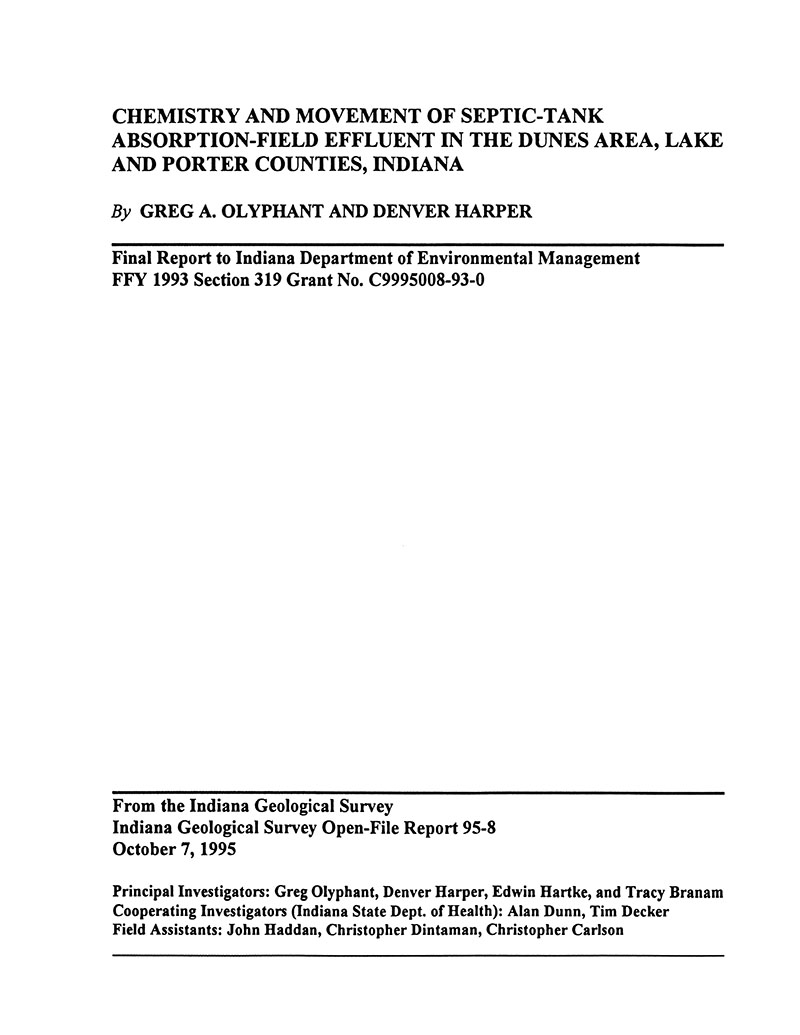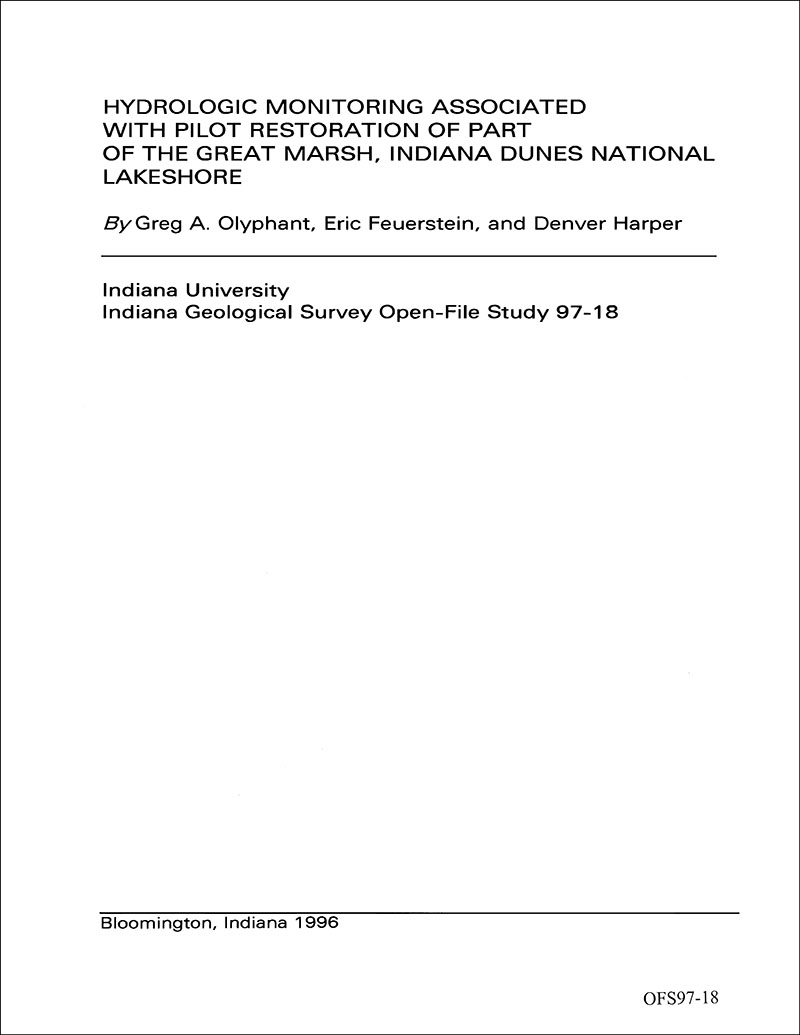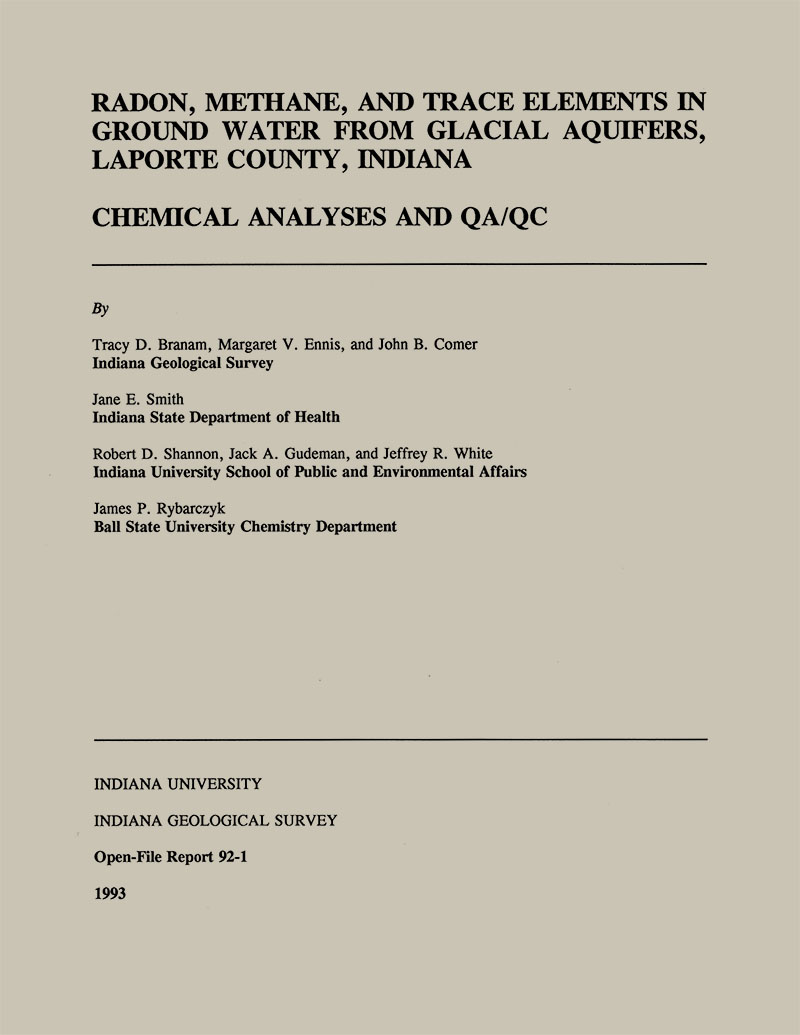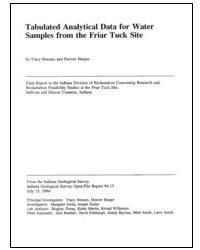SUMMARY: Chemical analyses of water sampled from domestic water wells of 70 residences in the town of Beverly Shores, Indiana, indicate that the only evidence of contamination at depth in the water-table aquifer is elevated concentrations of chloride and nitrate+nitrate at a few locations. More detailed investigations of soil and groundwater chemistry in the immediate vicinity of septic-tank absorption fields indicated that the unsaturated zone and shallow part of the water-table aquifer are being locally degraded by septic effluent. Evidence of contamination includes elevated concentrations of chloride (>1,000 mg/L), nitrate+nitrate (>30 mg/L), and periodic occurrences of fecal coliforms (>20 CFU/100mL). Bacteria have never been detected in the water wells of the residences, however, and the concentrations of chloride and nitrate+nitrate in samples from the domestic wells are much lower than those in the shallow water table. Continuous measurements of physical and chemical parameters, an injection test, clearly demonstrate that septic effluent periodically enters the water table, as a result of rainfall infiltration and gravity drainage. The findings of this study indicate that, while no widespread contaminant plumes currently exist within the water-table aquifer of the area, degradation of water quality is occuring, and the degradation is greatest in low-lying areas on the edge of the Great Marsh, where the water table lies very close to the ground surface.
Olyphant, G. A., Harper, D. 1995, Chemistry and movement of septic-tank absorption-field effluent in the dunes area, Lake and Porter Counties, Indiana: Indiana Geological Survey Open-File Study 95-08, 15 p., 3 fig.
Notes: Publications in the Indiana Geological Survey Open-File series have been inconsistently named using a variety of series titles including "Open-File Report," "Open-File Map," and "Open-File Study." Prior to 1994, a publication in this series was generally referred to as an "Open-File Report" (but not always). To help reduce confusion created by these inconsistencies, the IGS now refers to every publication in the Open-File series as an "Open-File Study." To be entirely correct in writing a bibliographic reference for a publication, one should use the series name and number that appears on the publication itself.
4 app. (69 p.)
You may also like:
Keywords: geochemistry, hydrogeology, Indiana Dunes, septic, aquifer, Great Marsh, Toleston Beach
Can't find what you're looking for? Feel free to contact us directly:
Indiana Geological and Water Survey
1001 E. 10th St.
Bloomington, IN 47405
812-855-7636 (phone)
812-855-2862 (fax)
IGWSinfo@indiana.edu
IGS Return Policy
- Original sales receipt required.
- Returns accepted within 30 days of purchase date.
- Refund will be issued by the same method of payment as purchased.
- Products must be returned in the same new condition as purchased.
- Refunds on custom orders and digital products are NOT allowed.
- Customers are responsible for paying shipping costs to return products.
Updated 8/19/2020








